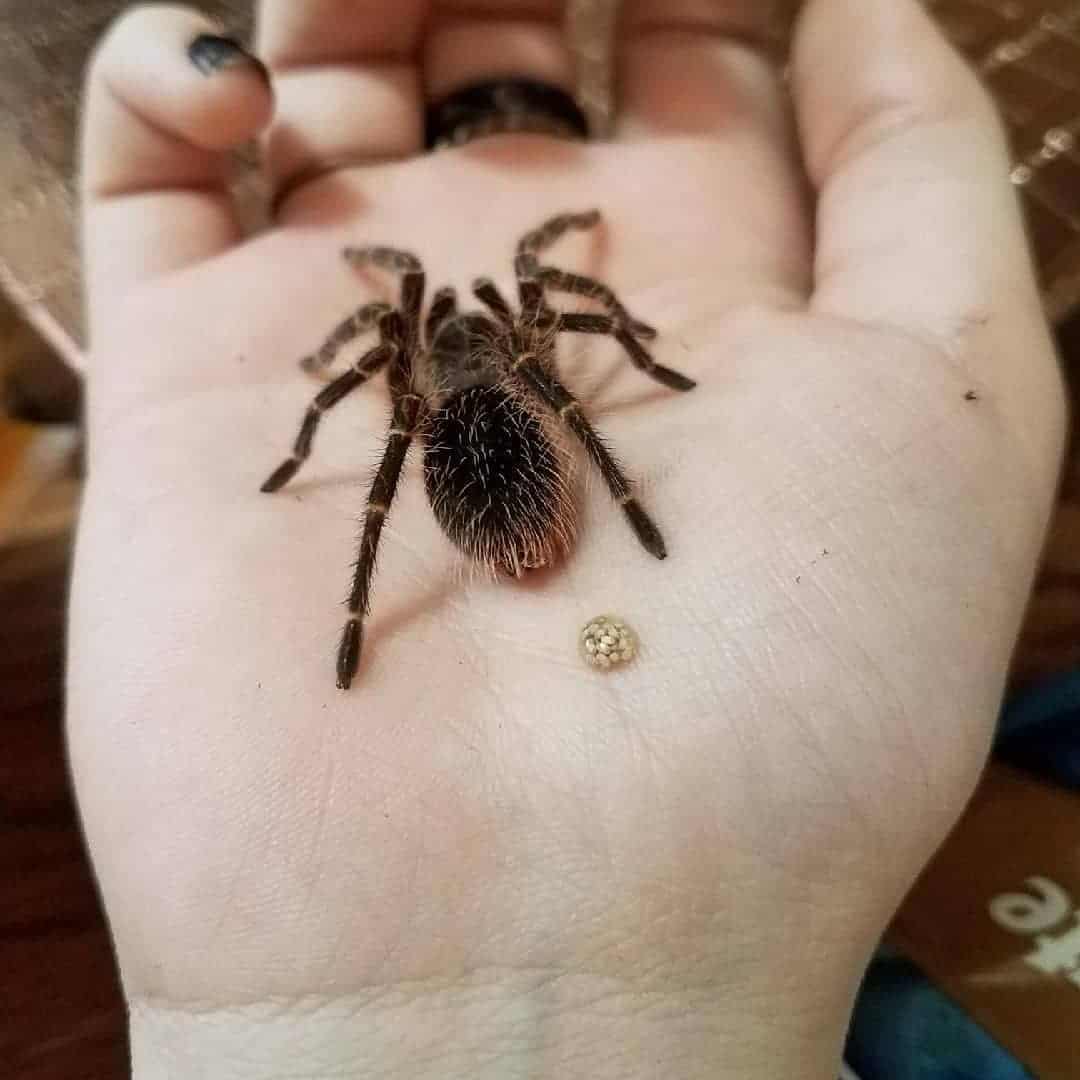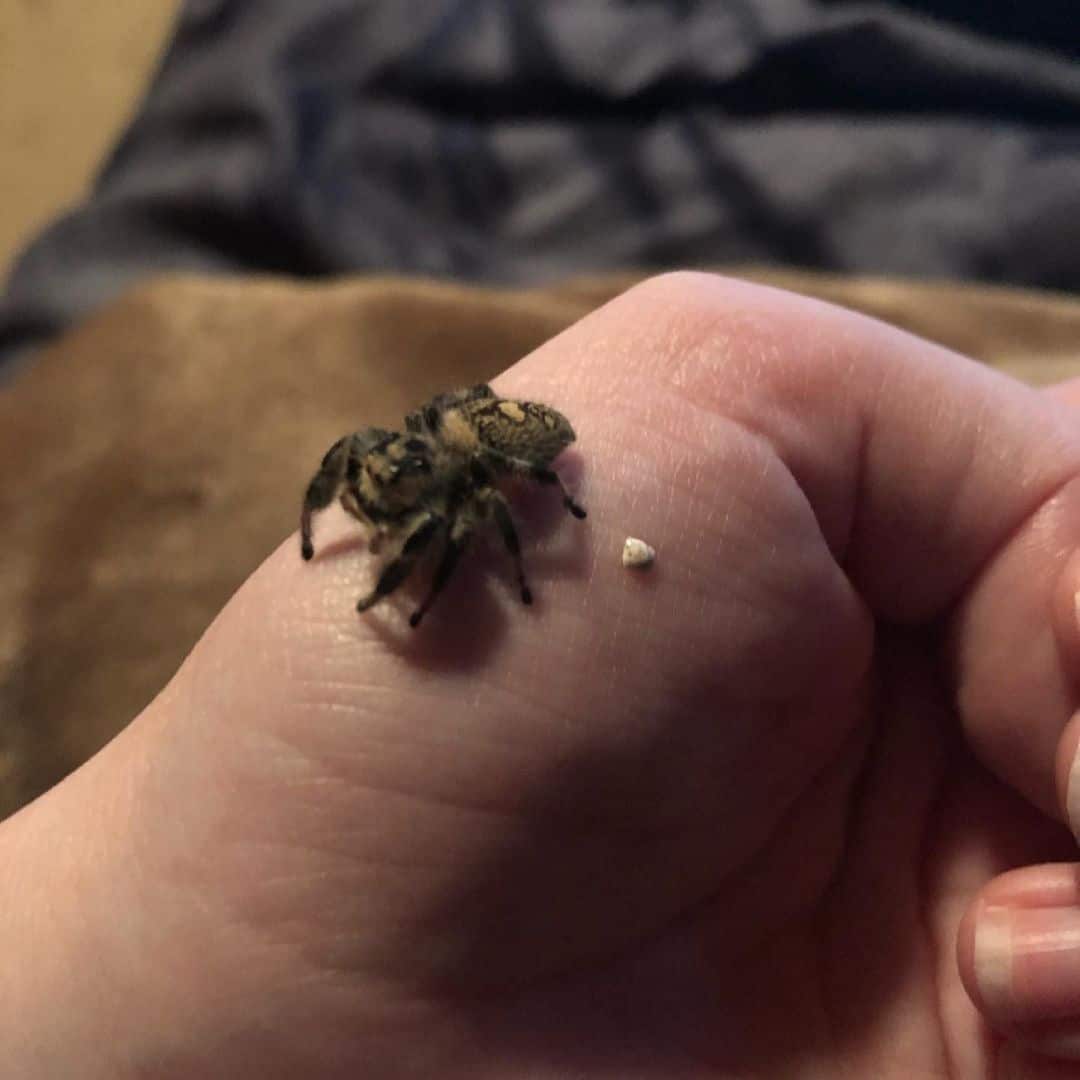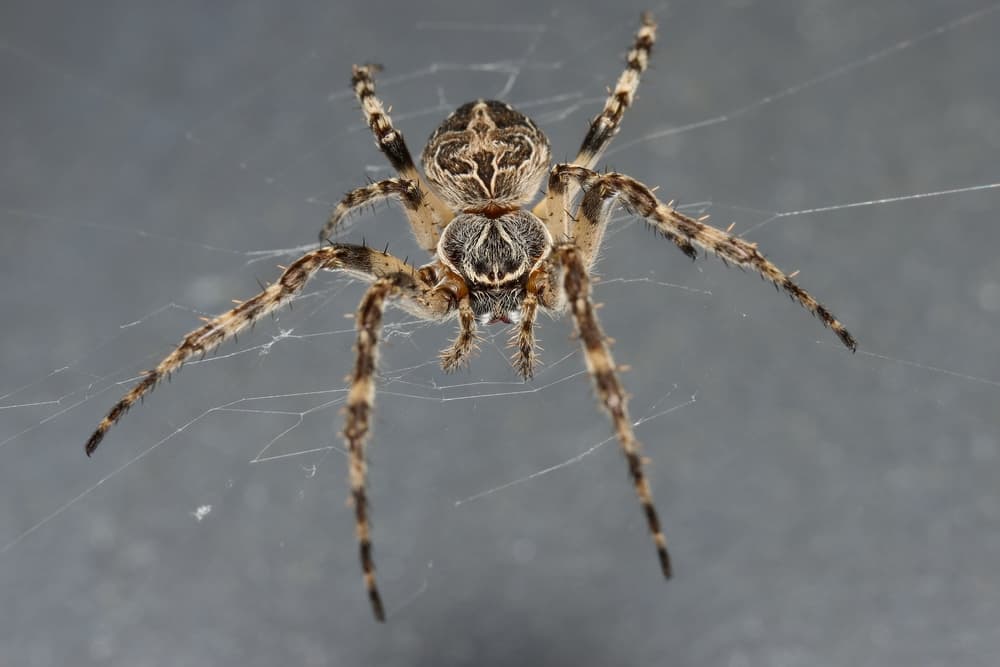No one wants to have insect poop in their home. It looks disgusting, and you’ll want to get rid of it as soon as possible. However, identifying exactly what insect is responsible for it is important so you can take steps to get rid of them.
That begs the question of what does spider poop look like? Here we’re going to take a closer look at the question while also seeing if it can be confused with the poop of other household pests. By the end, you’ll have all the info you need. Let’s get started!
What Does Spider Poop Look Like?
Spider poop can be described in several different ways, but it is essentially a thick dark material that appears in small patches. Due to this, it’s often described as dark brown paint splatter, but it’s usually thicker than paint.
Some also say that it can look like spots of dark ink, which is closer to its texture than paint. I’d describe it as looking at small instant coffee granules that have been exposed to a bit of water, as it can have that steaky nature to it.
Hopefully, these three examples can give you a picture of what you should be looking for. Spider poop does not have the same solidity and texture as the poop from a small animal, such as a mouse.
Wondering what spider urine looks like? Well, you don’t need to. Spiders excrete all their unwanted bodily fluids through their anus. This basically means that their poop and urine are the same things, so don’t worry about finding any urine.
Spider Poop vs. Other Insect Poop
So you see these very dark granules of poop and panic, thinking you have a spider infestation. Before you worry, it’s a good idea to double-check that it’s spider poop you’re dealing with and not something else.
Let’s have an overview of different pests you may find around the home:
- Cockroaches – Their poop is more like you’d get from a small animal. It is more solid than spider poop, and it is usually lighter too, like a light brown. Added to this, it has a more rounded shape.
- Mouse – There’s no reason to mistake this for spider poop. Mouse droppings are little pellets. They have a very solid rounded structure and are quite dry, especially compared to spider poop.
- Termite – Thankfully, there’s also no confusing termite poop with spider poop either. Termite poop looks like small bits of sawdust.
- Bed bugs – This is the one poop that can be easily confused with that of a spider. They look extremely similar, but as bed bugs feed on humans, their poop will stay very close to their feeding source, such as a bed. Spiders try to avoid humans, so that’s the best way to tell their poop apart, and their location.
- Racoon/Rat/Opossum etc. – Their poop is a larger version of mouse droppings. It will be obvious that it’s not from a spider, as it’s too big.

Is Spider Poop a Problem?
Not from a toxicity point of view, no. You don’t need to have any health concerns if you see spider poop. It is minimally toxic, and you’re not going to get ill from it. This is in stark contrast to other types of poop, such as from rodents.
People have reported feeling nauseous after dealing with spider poop, but this is likely due to being disgusted by it, rather than any physical reaction. Spiders can actually digest insects that are toxic, such as flies, and have no trace of that toxicity in their poop.
There is no reason to be scared of spider poop, and no reason to be scared of having spiders in your home in general. Of course, many people have a fear of spiders, which is understandable. But beyond an irrational fear, you shouldn’t worry too much about having spider poop in your home.
Is Spider Poop a Bad Sign?
If you’re scared of spiders, then it’s bad news. Spiders have a very slow metabolism and can often go for days without eating any food. It’s an impressive natural ability that aids in their survival, but it also means that they don’t poop a lot.
So what does that mean for you? Well, it means that if you see spider poop, then it’s a sign that the spider has either been in that location for a long time, or there is a nest of spiders nearby. This is why regular cleaning is an important spider deterrent.
If you have a large amount of spider poop in one location, then you probably need to investigate. Does the mere idea of that make your skin crawl? If so, then it may be the right time to call in the professionals to try and rid your home of spiders.
There is another problem with spider poop too, and that is staining. If you wipe the poop away shortly after it is excreted, then it’s unlikely to leave a stain. However, you’re probably finding the poop after it has been there for a while.
If this is the case, then it will leave a yellowish stain once it has been wiped away. This stain is difficult to clean, especially if it’s on a painted surface. If it’s on a harder surface, such as PVC, you can often use a little bleach to remove the stain.
If you want to look for a sign of infestation, then you can look to see if there are any eggs around. Spider eggs look exactly like you’d expect them to look. They are light spheres that are usually clumped together.

How to Clean Spider Poop
As we’ve mentioned, you don’t need to worry about getting ill from spider poop. You won’t need to take the same level of precautions as you were cleaning rodent poop, for example.
That being said, you’re still cleaning poop, and it’s disgusting. You’ll most likely want to wear gloves and a mask, and even goggles if you want to. These are all optional and not really needed as long as you thoroughly clean your hands afterward.
To get rid of the poop, you need nothing more than warm water and a touch of mild soap. You can just wipe it, and it will usually come away quite easily. If it has been there for a long time, then it may need some gentle scrubbing.
It can be difficult to remove the yellow streaks, and painted surfaces may need to be repainted. For other areas, you can usually remove the stain with bleach or a store-bought surface cleaner.
How to Deter Spiders
Never want to look at spider poop again? If so, you’ll probably want to find ways to deter spiders from ever coming into your home in the first place. Let’s look at a few ways to do that:
- Smells – Spiders hate a range of strong smells, including strong acidic smells such as vinegar and citrus. There are other nicer scents that have had good results deterring them, such as cedar, garlic, cinnamon, and peppermint oil. You can try a few and see which works.
- Block Entrances – Spiders can squeeze through little gaps, so look around your room and see if there are any places they could be entering. Try and seal any gaps, such as window sills, with caulk to block them from coming in.
- Remove Prey – Spiders eat insects, and they want to be where insects are. For example, if you leave your lights on with the windows open, you’ll get plenty of flies. That makes the environment a very inviting one for spiders.
- Add a Predator – Always liked the idea of getting a cat? If so, their natural instinct to hunt spiders is another great idea to get one. Some cats enjoy doing this more than others, so it can be a little hit-and-miss whether or not your feline will become an expert hunter.
- Check Your Perimeter – Are there bushes right by the edge of your home? Do you keep your bins close to your back door? These can attract insects, and therefore attract spiders along with them. Try and keep anything that attracts insects slightly away from your property.
- Clean Often – Spiders like to be undisturbed, and they like having places to hide. If you keep your home clean, they won’t be as comfortable. The less cluttered your home is, the less inviting it will be for spiders to make it their home.
Conclusion
It’s disgusting to have poop from any pest in your home, but hopefully, now you know what to look out for when it comes to spider poop. It’s often a dark, semi-solid material that resembles the likes of paint splatter, ink splatter, and instant coffee granules.
Thankfully it isn’t toxic, and therefore you shouldn’t worry about it affecting your health. Lots of spider poop can be a sign of an infestation, and if this is something you’re worried about, it may be best to call the professionals to check it out.
